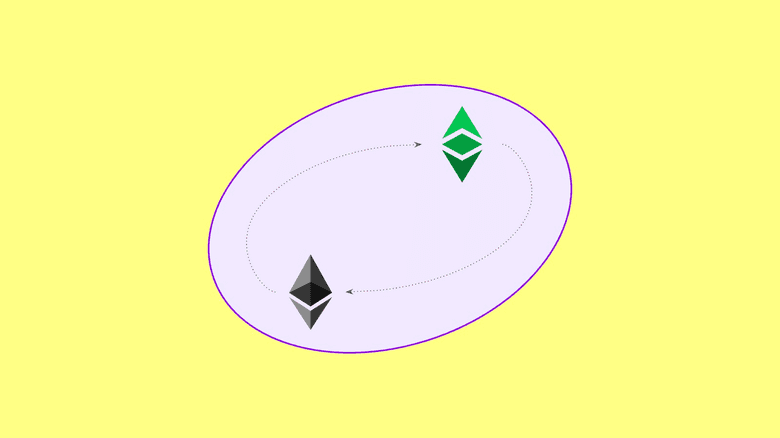Ethereum Classic Will Always Be State of the Art Technology
You can listen to or watch this video here:
As we have pointed out before in our article “The Innovation of Ethereum Classic Is Unstoppability”, ETC is not about the latest bells and whistles, but about decentralization, permissionlessness, censorship resistance, and immutability.
These features give the Ethereum Classic blockchain the true benefits of the Code Is Law philosophy as accounts, balances, and dapps are truly unstoppable.
However, it would be a fallacy to assume that ETC is a blockchain that is static and has no innovation.
To the contrary, Ethereum Classic is, and will always be, state of the art technology.
The difference between ETC and other networks that primarily seek innovation is that ETC will only integrate that innovation which affirms and enhances its principles.
Ethereum Classic Is Part of a Larger Ecosystem

ETC is part of a larger ecosystem called the EVM standard.
“EVM” stands for “Ethereum Virtual Machine” which is the underlying technology of all networks that follow the format.
The EVM protocol components are the following:
- An EVM to execute opcodes.
- A GAS system to designate computing costs to each opcode to prevent spam and the halting problem.
- Programming languages, with Solidity as the most used one, so developers may build dapps that are executable by the EVM.
- State transition so the EVM may take inputs, execute programs, and produce new state outputs.
- Storage of software programs (smart contracts) in the ledger, turning them into decentralized programs.
All the above technical components enable a blockchain to run smart contracts, and ETC is actually the first network in this standard and the first smart contracts network in the world.
Now, as the largest proof of work smart contracts blockchain in the world, ETC has a very important role in this segment and will always be updated to comply with the standard.
Operational Parity With Ethereum
As an EVM blockchain ETC is in a peer group with several other systems such as Ethereum, BNB Smart Chain, Cardano (through a sidechain), Polkadot (through a parachain), TRON, Solana (through the Neon EVM), Avalanche, Polygon, Optimism, and EOS.
Usually, the research and development lead is maintained by the Ethereum community, but any changes or upgrades originated from any of the technologies in the ecosystem will usually trigger updates in the rest of the members because to be on par with the standard is very important for compatibility and usage of the systems.
As examples of its state of the art technology, ETC has implemented several upgrades that have kept it in operational parity with Ethereum. These include the Atlantis, Agharta, Phoenix, Magneto, and Mystique upgrades. And, whenever general EVM standard updates become necessary, ETC will continue to implement such changes with more upgrades.
One thing to note, though, is that ETC will usually integrate EVM standard features that represent better technology or functionality, but will very likely leave out changes that would undermine its security and principles. One such case was that ETC did not migrate to the proof of stake consensus mechanism as Ethereum did.
Atlantis Upgrade
As historical examples of how ETC has kept up with the EVM standard technology, in the Atlantis upgrade, which happened on block 8,772,000 on September 12 of 2019, Ethereum Classic core developers implemented the Ethereum Spurious Dragon and Byzantium network protocol upgrades.
These changes were implemented through the Ethereum Classic Improvement Proposal (ECIP) 1054:
https://ecips.ethereumclassic.org/ECIPs/ecip-1054
Agharta Upgrade
With the Agharta upgrade on block 9,573,000 which happened on January 11 of 2020, Ethereum Classic core developers implemented the Ethereum Constantinople and St. Petersburg network protocol upgrades to maintain operational parity with its sister chain.
These changes were implemented through the Ethereum Classic Improvement Proposal (ECIP) 1056:
https://ecips.ethereumclassic.org/ECIPs/ecip-1056
Phoenix Upgrade
With the Phoenix upgrade on block 10,500,839 which happened on June 1 of 2020, Ethereum Classic core developers implemented the Ethereum Istanbul network protocol upgrades to maintain operational parity with its sister chain.
These changes were implemented through the Ethereum Classic Improvement Proposal (ECIP) 1088:
https://ecips.ethereumclassic.org/ECIPs/ecip-1088
Magneto Upgrade
With the Magneto upgrade on block 13,189,133 which happened on July 23 of 2021, Ethereum Classic core developers implemented the Ethereum Berlin network protocol upgrade to maintain operational parity with its sister chain.
These changes were implemented through the Ethereum Classic Improvement Proposal (ECIP) 1103:
https://ecips.ethereumclassic.org/ECIPs/ecip-1103
Mystique Upgrade
With the Mystique upgrade on block 14,525,000 which happened on February 12 of 2022, Ethereum Classic core developers implemented the Ethereum London network protocol upgrade to maintain operational parity with its sister chain.
These changes were implemented through the Ethereum Classic Improvement Proposal (ECIP) 1104:
https://ecips.ethereumclassic.org/ECIPs/ecip-1104
Collaboration for the EVM EOF Upgrade
Another example of how and why Ethereum Classic will be kept up-to-date with the latest technology of the EVM standard, provided it does not violate its principles, is that the three core developers who maintain the network’s software clients, will be collaborating with an upcoming general EVM standard upgrade called the Ethereum Virtual Machine Object Format upgrade, or EVM EOF upgrade for short.
The EVM EOF upgrade will likely occur in late 2023 in the Ethereum Cancún hard fork.
The EIPs that will likely be included in this update are:
- EIP-3860 “Limit and meter initcode”
- EIP-3540 “EVM Object Format v1”
- EIP-3670 “Code Validation”
- EIP-4200 “Static relative jumps”
- EIP-4750 “Functions”
- EIP-5450 “Stack Validation”
After this change, the Ethereum Classic blockchain will likely be totally compatible with the new EVM standard specifications by the first half of 2024, as it usually waits from 3 to 6 months to follow new upgrades for security reasons and because it is a more conservative blockchain.
This is a historical upgrade for the whole EVM ecosystem as it will solve several long standing problems that were lingering in the technology stack and will bring the base layer protocol much closer to the goal of ossification.
A Note About Ossification
Although in this post we are expressing and explaining how ETC is kept up-to-date with all the most significant innovations in the industry, it is important to consider that change for the sake of change in itself is not a safe strategy for a proof of work blockchain that seeks to be immutable and censorship resistant.
Indeed, a concept called ossification, where change is significantly reduced or even completely diminished is an important goal of ETC, and very likely of the entire EVM segment as a whole.
Ossification minimizes the risk of changes and upgrades that could undermine the decentralization and permissionlessness of a blockchain system. This is why it is so important to understand that innovation was and will not be the main motif of a network as ETC. The main motif will always be unstoppability. So, the earlier Ethereum Classic reaches ossification, the better it will be for users worldwide.
Thank you for reading this article!
To learn more about ETC please go to: https://ethereumclassic.org
